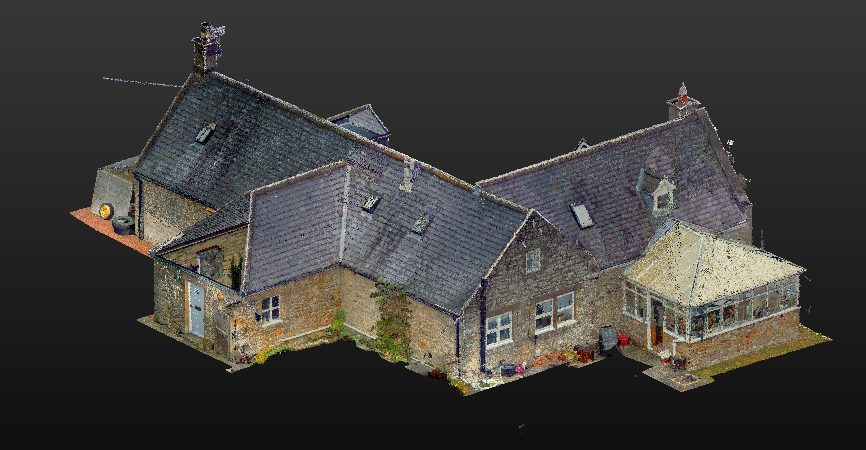3D Laser Scanning in Newcastle-Upon-Tyne
Are you looking for highly accurate and efficient surveying solutions in Newcastle upon Tyne? We offer comprehensive 3D laser scanning services tailored to meet your specific needs. With our state-of-the-art equipment and skilled team of surveying professionals, we can capture precise data and create detailed 3D representations of any structure or terrain. Whether you require topographic surveys, measured building surveys, building information modeling, structural analysis, or cultural heritage preservation, our 3D laser scanning services will exceed your expectations.
At Project North Geomatics, our surveyors use the latest 3D laser scanning technology to carry all 3D laser scanning services and 3D data acquisition in and around Newcastle-Upon-Tyne. 3D laser scanners allow for the capture of large quantities of data in a short period of time, optimising site time and data acquisition. 3D laser scanners provide the platform to capture highly accurate, detailed and dense 3D data resulting in the production of fully comprehensive 3D point clouds and 3D deliverables.
Contact us today to discuss your requirements and unlock the benefits of 3D laser scanning in Newcastle upon Tyne.
Laser scanning technology has emerged as a game-changer in various industries, revolutionizing the way we capture, visualize, and analyze spatial data. From architecture and engineering to construction and beyond, laser scanning offers a plethora of benefits that streamline processes and enhance project outcomes. In this article, we explore the advantages of laser scanning with a focus on its applications in different fields.
Speed and Efficiency
Rapid data capture: Laser scanners can quickly and accurately capture millions of data points in a matter of seconds, significantly reducing surveying time.
Fewer site visits: The comprehensive nature of laser scanning minimizes the need for multiple site visits, saving time and resources.
Faster data processing: Advanced software tools enable quick processing and analysis of the captured data, expediting project workflows.
High Precision and Accuracy
Pinpoint measurements: Laser scanners deliver precise measurements, offering sub-millimeter accuracy for critical spatial data.
Detailed representations: The resulting point clouds provide a detailed and accurate representation of the scanned object or environment.
Non-Intrusive Data Collection
Contactless scanning: Laser scanning is a non-intrusive method that doesn't require physical contact with the object, making it ideal for delicate structures and historical artifacts.
Minimized disruptions: During laser scanning, normal operations can continue without interruptions, ensuring minimal disturbance to ongoing activities.
Comprehensive Data Visualization
3D models and point clouds: The captured data can be transformed into 3D models and point clouds, allowing for immersive and detailed visualization.
Enhanced collaboration: Visual representations aid in better communication and collaboration among project stakeholders, facilitating effective decision-making.
Clash Detection and Quality Assurance
Clash detection: Laser scanning data can be integrated into Building Information Modeling (BIM) software to identify clashes between proposed designs and existing structures.
Quality assurance: Laser scanning allows for meticulous inspections, ensuring construction and manufacturing processes meet required standards.
Historic Preservation and Documentation
Cultural heritage preservation: Laser scanning plays a crucial role in documenting and preserving historic buildings, monuments, and artifacts for future generations.
Accurate documentation: The detailed data obtained through laser scanning serves as valuable as-built documentation for future renovations and restorations.
Safety and Risk Mitigation
Remote data capture: Laser scanners can access hard-to-reach or hazardous areas, reducing the need for personnel to enter potentially risky environments.
Early identification of issues: Laser scanning enables the identification of structural or safety issues in advance, helping to mitigate potential risks and prevent accidents.
Useful 3D Laser Scanning Information:
-
3D laser scanning produces a 3D representation of an object, building or structure which is referred to as a point cloud, the addition of on board HDR imagery also adds photo realistic colourisation and visuals to the 3D data. 3D laser scanning is a survey solution that is fast, data rich and non-intrusive which can often be a major advantage in areas of limited access, hazardous areas or completely inaccessible.
-
Project North Geomatics use 3D laser scanning across a range of projects from building restoration and development to highways, bridge and petrochemical projects due to the accuracy and wealth of information obtained and the non-intrusive nature of the process. We predominantly use 3D laser scanning in the production of 2D or 3D Measured building surveys as the accuracy is far superior to that of conventional techniques. One main benefit of 3D laser scanning is it is a key asset in heritage projects, historic building documentation and restoration as it offers a complete 3D representation of that structure or specific object at that time that can be stored for future reference or use in the event of structural damage or deterioration. 3D laser scanning, point clouds and 3D data are becoming a key part in any design-based project as clients are able to add a visual aspect to a design whilst seeing how their design will fit the space available both structurally and aesthetically which can save costly errors or re designs later in the project.
-
Laser scanning information will be presented as a cleaned and fully registered point cloud in various file types to best suit client requirements.
Ortho rectified images can also be provided in .TIF format
A TrueView link will be provided which allows for online access to the laser scan project, given the client the ability to walk through the site via the scan locations. Offering the ability to measure, explore, and mark up site information whilst been used as a visual aid during the design phase of a project.







